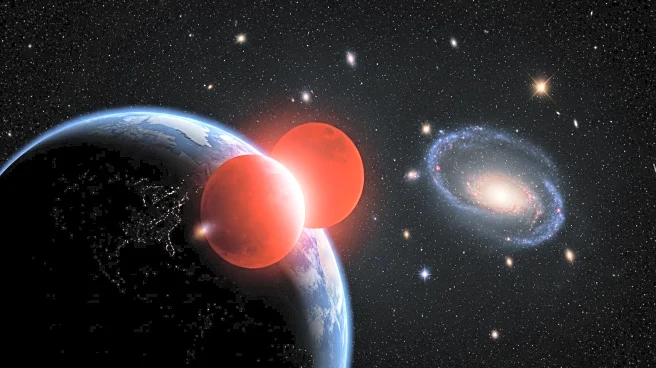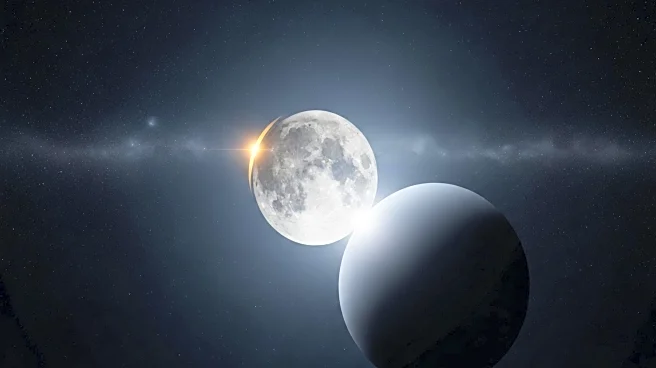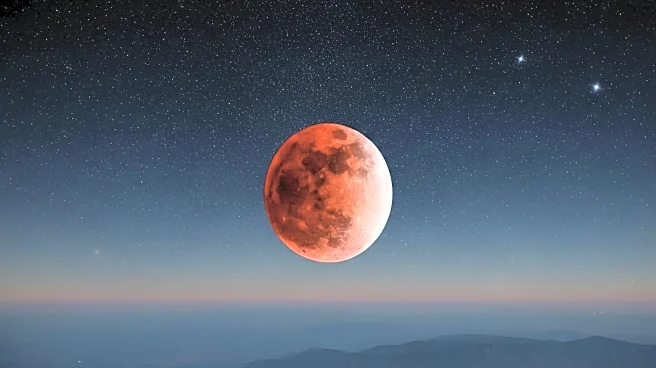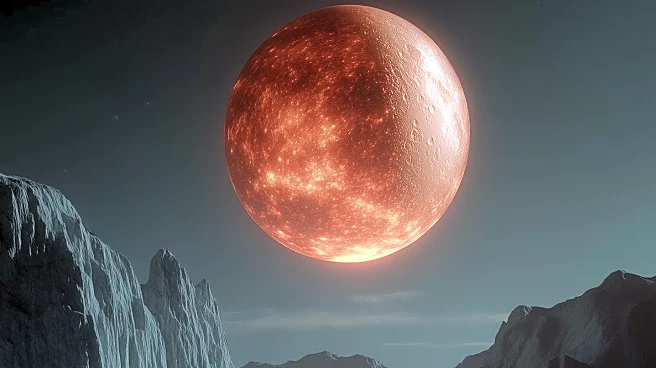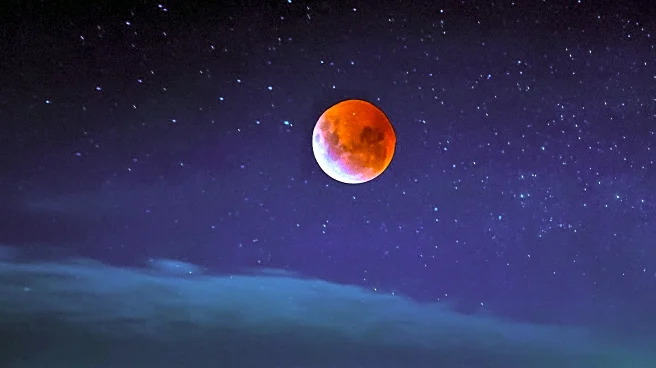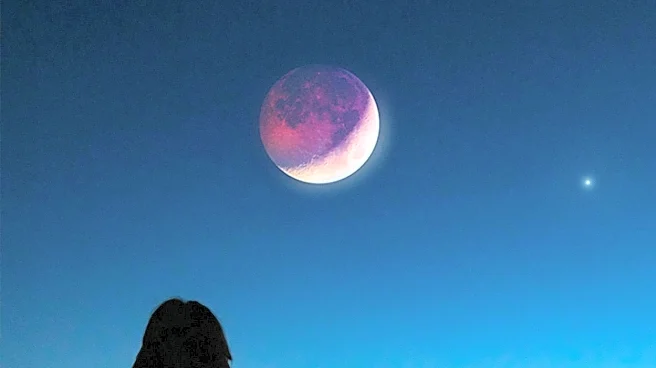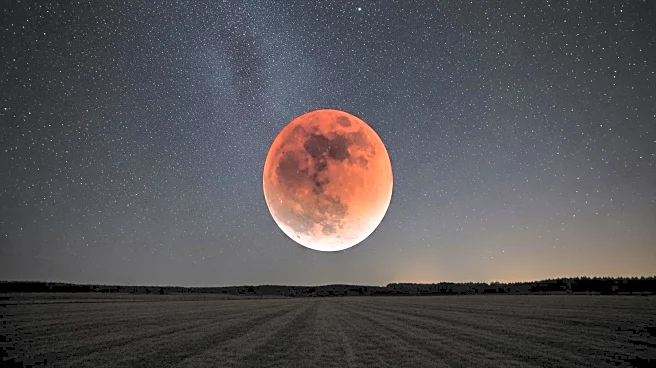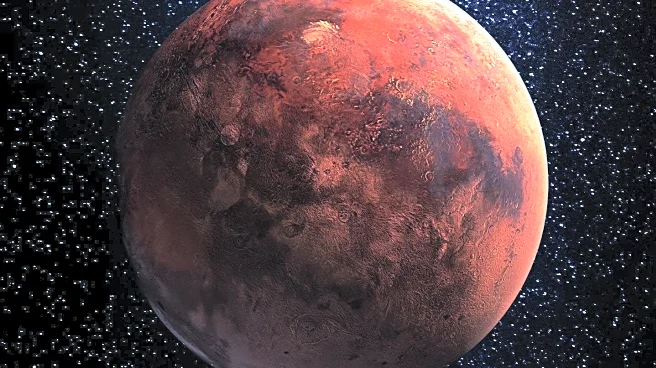What's Happening?
A total lunar eclipse, often referred to as a 'blood moon' due to its reddish appearance, is set to occur on September 7, 2025. During this event, the Earth will align between the sun and the moon, causing the moon to be enveloped in Earth's shadow. This phenomenon results in the moon reflecting a red glow, as explained by NASA. However, this particular eclipse will not be visible from the United States. Instead, it will be observable in regions including Europe, Africa, Asia, and Australia. The eclipse will last for 82 minutes of totality, with a significant portion of the global population able to witness at least part of the event. The next total lunar eclipse visible in the U.S. is scheduled for March 2-3, 2026.
Why It's Important?
Lunar eclipses are significant astronomical events that offer insights into the dynamics of celestial bodies and the Earth's atmosphere. For scientists and enthusiasts, these events provide opportunities to study the moon's surface and the Earth's shadow. The limited visibility of this eclipse in the U.S. highlights the global nature of astronomical phenomena and the interconnectedness of the scientific community. While U.S. observers will miss this event, it underscores the importance of international collaboration in space observation and research. The anticipation for the next visible eclipse in 2026 also reflects the public's enduring interest in celestial events.
What's Next?
The next total lunar eclipse visible in the United States is anticipated on March 2-3, 2026. This future event will likely draw significant attention from both the scientific community and the general public. Preparations for observation and study will be made by astronomers and space agencies, ensuring that the event is well-documented and analyzed. Public interest in such events may also lead to educational initiatives and community gatherings to observe the eclipse.
